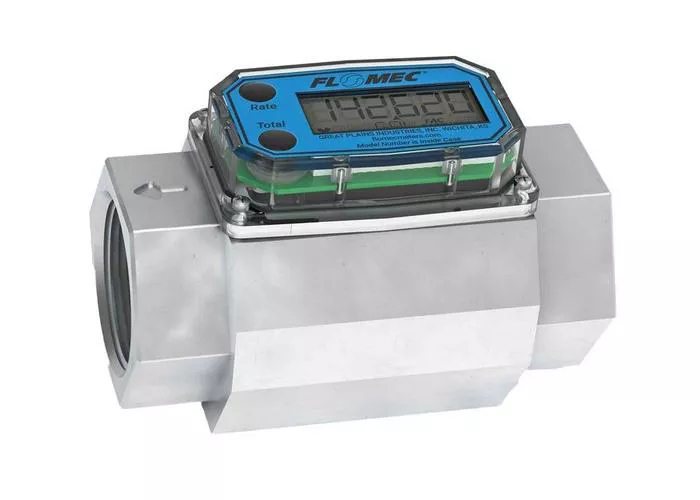In the realm of Instrumentation, precise measurement of fluid flow is paramount for efficient system control, energy optimization, and safety assurance. Among various technologies, the orifice plate flow meter stands out due to its simplicity, cost-effectiveness, and widespread industrial application. However, questions surrounding its accuracy persist, particularly in high-stakes industries like oil and gas, chemical processing, and power generation.
What is an Orifice Plate Flow Meter?
An orifice plate flow meter is a type of differential pressure (Flow Meter) device that measures fluid flow by introducing a restriction (orifice) into the flow stream. The fluid velocity increases and pressure drops across the orifice, and this pressure differential is used to calculate the flow rate. The simplicity of this device contributes to its popularity, but also introduces questions about the limits of its accuracy.
How Do Orifice Plate Flow Meters Work?
The operation of an orifice plate flow meter relies on Bernoulli’s principle. As the fluid passes through the narrowed section created by the orifice plate, its velocity increases and static pressure decreases. By measuring the pressure difference before and after the orifice, and knowing the properties of the fluid, the flow rate can be determined using standard flow equations. This process involves numerous assumptions and correction factors that influence overall accuracy.
Factors Affecting the Accuracy of Orifice Plate Flow Meters
While orifice plate meters are inherently simple, their accuracy is affected by several interrelated factors:
- Installation and Piping Layout: The flow profile must be fully developed and symmetrical for accurate readings. Upstream and downstream straight pipe lengths are critical to minimize turbulence and swirl.
- Plate Design: The type and edge condition of the orifice (sharp-edged, quadrant-edged, conical, etc.) directly impact measurement accuracy. Worn or damaged plates cause deviations.
- Fluid Properties: Changes in temperature, pressure, and viscosity can affect the density of the fluid and introduce errors if not properly compensated.
- Differential Pressure Measurement Accuracy: High-precision differential pressure transmitters are essential. Any drift or inaccuracy in these instruments directly translates to flow errors.
- Flow Regime: Orifice meters perform best in turbulent flow conditions. Low Reynolds numbers can distort flow profiles and increase uncertainty.
Quantifying Accuracy: What Do the Standards Say?
According to industry standards like ISO 5167 and ASME MFC-3M, the accuracy of orifice plate flow meters typically ranges between ±0.5% to ±1.5% of actual flow rate, assuming proper installation and calibration. This level of precision is acceptable for many industrial applications but may fall short in processes requiring highly accurate mass flow measurements.
Calibration and Verification
To ensure accuracy, orifice plate meters must be periodically calibrated against traceable flow standards. This may be done in specialized flow labs or by in-situ verification using secondary instruments. Drift in pressure transmitters or degradation in plate condition can lead to substantial measurement error over time.
Orifice Plate Versus Other Flow Meters
Compared to other flow meters like electromagnetic, ultrasonic, or Coriolis types, orifice plates are more affordable but generally less accurate. For example:
- Coriolis Flow Meters: Accuracy as high as ±0.1% but significantly more expensive.
- Ultrasonic Flow Meters: Non-intrusive and accurate to ±0.5%, suitable for large pipes.
- Electromagnetic Flow Meters: Very accurate for conductive fluids, but not suitable for gases or hydrocarbons.
These comparisons underscore the trade-off between accuracy, cost, and application-specific requirements.
Use Cases Where Orifice Plate Flow Meters Are Sufficiently Accurate
Despite limitations, orifice plate flow meters remain viable for many applications, particularly where absolute accuracy is not the primary concern:
- Steam flow monitoring in power plants
- Natural gas distribution
- Water and wastewater treatment
- Compressed air systems
- Boiler and HVAC systems
In these scenarios, the key requirement is repeatability and long-term reliability, where orifice plates perform reasonably well.
Advanced Computational Tools and CFD
Recent advances in computational fluid dynamics (CFD) allow engineers to simulate flow behavior across orifice plates, enabling the identification of flow disturbances and refining of installation guidelines. These tools are helping to push the boundaries of accuracy without compromising the simplicity of the orifice design.
Best Practices to Improve Accuracy
To optimize accuracy, engineers should consider the following practices:
- Adhere strictly to ISO/ASME installation requirements.
- Use high-quality differential pressure transmitters with minimal drift.
- Regularly inspect and replace damaged orifice plates.
- Account for fluid property variations with real-time compensation.
- Calibrate regularly using known standards or redundant metering systems.
Conclusion
The orifice plate flow meter remains a reliable and cost-effective tool for measuring flow in many industrial settings. While not the most accurate technology available, it provides sufficient precision when correctly installed and maintained. Understanding its limitations and implementing best practices can significantly enhance its performance. For engineers and technicians, it offers a balance between accuracy, simplicity, and affordability that is hard to beat in many practical applications.
FAQs
1. What is the typical accuracy of an orifice plate flow meter?
Typical accuracy ranges from ±0.5% to ±1.5%, depending on installation quality and calibration.
2. Can orifice plates be used for both liquids and gases?
Yes, orifice plate meters are suitable for both liquids and gases, including steam and air, provided fluid properties are known and corrected for.
3. How often should orifice plate flow meters be calibrated?
Calibration frequency depends on the application, but annual calibration is common in most industrial settings.
4. What are the main causes of inaccuracy in orifice meters?
Primary causes include improper installation, worn or damaged orifice plates, incorrect fluid property assumptions, and poor-quality pressure transmitters.
5. Are there alternatives to orifice plate flow meters with higher accuracy?
Yes, technologies like Coriolis, ultrasonic, and electromagnetic flow meters offer higher accuracy but come at a higher cost and complexity.

